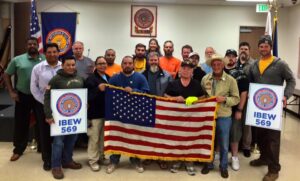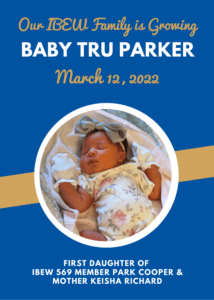The authors of this letter represent hundreds of thousands of families, residents, and workers throughout the region advocating for an equitable, safe, and healthy transportation system for all communities in our San Diego region.
We are writing in support of seven outcomes we would like to see accomplished in the SANDAG 2021 Regional Transportation Plan (RTP). As we have noted in prior communications, it is imperative to transform transportation across San Diego County from the ground up, in a manner that goes above and beyond state targets in climate, social justice, and economic justice and gives all in our region the clean and healthy environment they deserve while ensuring high-quality jobs and a world-class transportation network.
Below we have attached seven outcomes the RTP should achieve to support a safe and healthy future for all communities in our San Diego region. We urge the Board to hold these priority outcomes as the measures of success against which any draft RTP should be evaluated.
We look forward to working in partnership with SANDAG staff and the Board of Directors to ensure that the new vision for our regional transportation system supports a just, prosperous, and sustainable future for all.
Sincerely,
Andy Hanshaw, Executive Director, San Diego County Bicycle Coalition
Justin Hammond, Co-Founder and Chief Energy Advisor, Hammond Climate Solutions
Tara Hammond, Manager, San Diego Climate Hub
Bridgette Browning, President, UNITE HERE Local 30
Pamela Heatherington, Director, Environmental Center San Diego
Matt O’Malley, Executive Director and Managing Attorney, San Diego Coastkeeper
Ron Forster, Escondido Neighbors United
Jeremy Abrams, Business Manager, IBEW 569
Diane Nygaard, President of the Board, Preserve Calavera
David Grubb, Transportation Chair, Sierra Club San Diego
Mike McCoy, President, Southwest Wetlands Interpretive Association
Diana Ross, Executive Director, Mid-City CAN
Bee Mittermiller, Transportation Committee Chair, SanDiego350
Andrew Meyer, Conservation Director, San Diego Audubon
Deborah Knight, Executive Director, Friends of Rose Canyon
Kyle Heiskala, Interim Executive Director, BikeSD
Laura Walsh, Policy Coordinator, Surfrider San Diego County
Randy Torres-Van Vleck, Director of Policy and Planning, City Heights Community Development Corporation
Noah Harris, Policy Advocate, Climate Action Campaign
Key Outcomes for SANDAG’s RTP
To secure a healthy, safe, and equitable future, SANDAG must embrace an outcomes-driven RTP and identify priority outcomes aligned with those values. Below are seven key outcomes the Quality of Life Coalition urges SANDAG to prioritize in the 2021 Regional Transportation Plan:
1. Improve public health in disadvantaged communities and prioritize transportation and environmental justice by:
- Reducing transportation related pollution levels in disadvantaged communities.
- AB 805 requires SANDAG to identify which communities to prioritize in their efforts to reduce pollution levels in this RTP.
- SANDAG must use CalEnviroScreen 3.0 to identify these communities; we recommend defining disadvantaged communities as those in the top 30% of census tracts countywide, but also acknowledge that there are historically underinvested communities in San Diego County that are not adequately represented on this tool.
- Any new transportation vision that successfully reduces pollution levels in disadvantaged communities must include significant reduction in Vehicle Miles Traveled (VMT) and rapid electrification of the bus fleet.
- Providing infrastructure that:
- Encourages increased physical activity from active transportation
- Reduces the risk of traffic related fatalities and injuries for all modes
- Analyzing health outcomes that are affected by the regional transportation system in each alternative, such as asthma, cardiovascular and pulmonary disease, lung cancer, type 2 diabetes, physical activity and obesity rates, by demographic group.
2. Align with and exceed cities’ CAP transportation mode shift targets.
- SANDAG’s plan needs to support those local plans in order for our cities to be able to hit their targets and support transportation alternatives to driving, such as mass transit.
- Further, AB 805 – the new state law to reform SANDAG – requires that SANDAG align the RTP with local climate action plans.
3. Achieve a 30% or more per capita GHG reduction from transportation by 2035.
- SB 375 requires a minimum of 19% reduction by 2035; however, SANDAG Executive Director Hasan Ikhrata has identified a 30% target as feasible, and SANDAG should pursue the maximum feasible reduction to adequately address the threat of climate change.
- VMT reduction and mode shift through land use, housing, and transportation planning decisions must play a significant role in GHG reduction.
- As evidenced by Governor Brown’s Executive Order B-55-18 to Achieve Carbon Neutrality by 2045, and SB 32 and EO S-3-05, which set statewide emissions reductions targets at 40% below 1990 levels by 2030 and 80% below 1990 levels by 2050, the State of California continues to move towards decarbonization. SANDAG should align with these statewide goals in the next RTP.
- When vegetation is destroyed for transportation facilities the resulting loss of carbon sequestration and storage capability should be counted as a loss in future GHG reduction tabulations.
4. Create a rate structure that increases ridership and expands access to mobility.
- The regional transportation system must include Youth Opportunity Passes, which are no-cost transit passes for students and youth 24 years old and under.
- It must also include strategically-priced fares that maximize transit usage in all income brackets to increase use of public transit, improve public health, lower greenhouse gas emissions, and enhance social equity.
- Finally, it must be easier for seniors, people with disabilities, and Medicare users to obtain the discounted passes they are entitled to by making them available online and at more in-person sites.
5. Ensure that public transit is safe, comfortable, convenient and competitive with automobile travel.
- Public transit must be competitive with driving in terms of time, cost, predictability, and convenience.
- Prioritize urban core and transit-dependent communities, who are frequently low-income communities of color.
- Provide 24-hour service and immediate improvements to bus service, including amenities such as restrooms at transit stations.
- Ensure safe and comfortable bike and pedestrian first and last mile access to transit through funded, comprehensive, low-stress bikeway networks connected to mobility hubs, as well as adequate accommodation for bicycles on transit.
- Prioritize new rail transit that connects underserved communities with job centers such as the blue line express and a purple line alignment through City Heights while evaluating the impacts on communities that are being displaced and gentrified.
- Prioritize relocation of public transit corridors that are vulnerable to erosion and sea level rise, rather than armoring in place.
- Ensure rural communities have access to quality, convenient, sustainable travel options that offer alternatives to fossil-fuel vehicles.
6. Ensure transportation projects are creating high-quality careers in construction in our region through a Project Labor Agreement.
- Major cities including Seattle and Los Angeles have employed project labor agreements to promote their commitment to labor stability, joint labor-management apprenticeship and a diverse, local workforce.
- Encourage construction employment and training opportunities in ways calculated to mitigate the harms caused by geographically concentrated poverty and unemployment in economically disadvantaged areas and among disadvantaged workers.
- Adopt a Community Workforce Policy that is implemented through a Project Labor Agreement with the Building Trades to create career pathways for a skilled and trained workforce for residents of our local communities.
7. Preserve Biodiversity, Natural Habitat, and Open Space
- Ensure transportation projects protect the integrity and contribute to successful implementation of existing and planned multiple species conservation plans (MSCPs) including avoiding sensitive habitat areas within the City of San Diego’s Multi-Habitats Planning Area and County of San Diego’s Pre-Approved Mitigation Area and consistency with MSCPs rules.
- Ensure transportation projects preserve natural habitat and other ecologically sensitive lands not covered by regional MSCPs including: urban canyons, waterways, waterbodies, ecological linkages, and ecologically important greenfields.
- Direct transportation projects away from remote or rural natural lands and into existing developed communities and urban areas.
- Ensure habitat mitigation land related to transportation projects is protected and managed for that ecological benefit.


